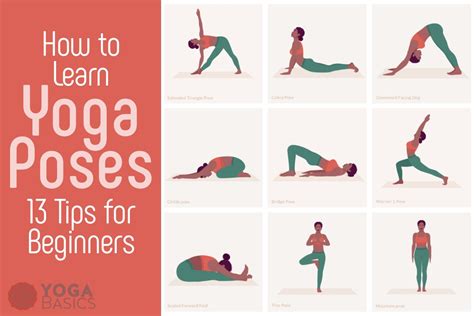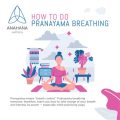Essential Guide to Basic Yoga Practice: A Comprehensive Approach to Mind and Body Wellness
Yoga is an ancient practice that encompasses a holistic approach to physical, mental, and spiritual well-being. Whether you’re a beginner looking to explore yoga for the first time or an experienced practitioner seeking deeper understanding, mastering basic yoga techniques forms the foundation of any successful practice. In this guide, we will break down the key components of basic yoga practice, explore its historical roots, analyze its current relevance, and offer practical applications for everyday life.
Introduction
Basic yoga is often seen as a starting point for individuals wishing to improve flexibility, strength, and mindfulness. However, there’s much more beneath the surface. This article will guide you through the key concepts of basic yoga, provide historical and current context, and examine the practical applications and implications of incorporating yoga into your daily routine.
Key Concepts
At the heart of basic yoga practice lie a few fundamental principles, each of which contributes to a holistic understanding of the practice:
- Asanas (Postures): The physical poses performed in yoga. Each asana offers specific benefits such as improved flexibility, muscle strength, or internal organ health.
- Pranayama (Breath Control): Control and regulation of breath to manage the mind and body. Breathwork is crucial in yoga practice to enhance focus and relaxation.
- Mindfulness and Meditation: A focus on the present moment, reducing stress and fostering mental clarity through meditation techniques.
- Alignment and Balance: Proper alignment in poses to prevent injury and maximize benefits.
Historical Context
Yoga originated in ancient India over 5,000 years ago as a spiritual and philosophical discipline. In its earliest forms, yoga was closely tied to religious practices in Hinduism, Buddhism, and Jainism. The focus was less on physical postures and more on meditation and spiritual growth.
Throughout history, yoga has evolved. In the 20th century, modern yoga took root in the West, focusing on physical postures (asanas) as a form of exercise. Yoga’s popularity surged in the 1960s and 1970s in Europe and the United States, becoming a staple for both physical fitness and stress relief.
| Historical Period | Development in Yoga |
|---|---|
| Pre-Classical Period (Before 500 BCE) | Yoga emerged as a meditative practice in the Indus Valley. |
| Classical Period (500 BCE – 800 CE) | Philosophical texts like the Yoga Sutras were written, systematizing yoga. |
| Post-Classical Period (800 CE – 1800 CE) | Shift towards physical postures and breath control to achieve enlightenment. |
| Modern Period (1800 CE – Present) | Yoga spreads to the West and becomes a popular physical and mental discipline. |
Current State Analysis
Today, yoga is a multi-faceted practice, ranging from traditional Hatha yoga to modern variations like Vinyasa and Power yoga. Yoga studios, online platforms, and mobile apps have made it accessible to a global audience. Despite its popularity, misconceptions persist about its purpose and benefits. Some view yoga solely as a fitness trend, neglecting its meditative and philosophical roots.
Misconceptions and Realities
- Misconception: Yoga is just stretching.
- Reality: Yoga involves mindful breath control, meditation, and mental discipline in addition to physical postures.
- Misconception: Yoga is a religion.
- Reality: Yoga is a spiritual practice, but not tied to any specific religion.
- Misconception: You have to be flexible to do yoga.
- Reality: Yoga is adaptable for all body types, and flexibility improves over time with practice.
Practical Applications
Incorporating basic yoga into your daily life offers numerous benefits. Here are practical ways to include yoga in your routine:
- Start your morning with a short Sun Salutation sequence to energize your body.
- Practice breath control (Pranayama) techniques during stressful moments to calm your mind.
- Dedicate a few minutes to mindfulness or meditation after your yoga practice for mental clarity.
- Use yoga stretches like Downward Dog or Child’s Pose during work breaks to relieve tension.
Case Studies
Below are examples of individuals who have integrated basic yoga into their lives with transformative results:
| Case Study | Initial Condition | Outcome After Incorporating Yoga |
|---|---|---|
| John (Corporate Worker) | High stress, poor posture, lower back pain. | Reduced stress levels, improved posture, and back pain relief after 6 months of basic yoga. |
| Linda (New Mother) | Postpartum depression and lack of energy. | Increased energy and improved mental clarity after 3 months of consistent yoga practice. |
| Michael (Athlete) | Frequent muscle strain, lack of flexibility. | Improved flexibility, quicker recovery from injuries after integrating yoga into his workout. |
Stakeholder Analysis
Understanding the stakeholders in basic yoga practice is key to promoting its benefits. The main stakeholders include:
- Practitioners: Individuals practicing yoga for physical, mental, or spiritual reasons.
- Instructors: Teachers guiding students through their yoga journey.
- Health Professionals: Doctors and therapists who may recommend yoga for stress relief, physical therapy, or mental health improvement.
- Yoga Studios/Platforms: Providers of in-person or online classes, contributing to the accessibility of yoga.
- Fitness Industry: Fitness brands that market yoga-related products and equipment.
Implementation Guidelines
For a successful implementation of basic yoga into daily life, consider the following guidelines:
- Set Clear Goals: Understand why you are practicing yoga, whether for fitness, relaxation, or spiritual growth.
- Start Small: Begin with short sessions (10-15 minutes) and gradually increase your practice time.
- Focus on Breath: Proper breath control enhances the benefits of each posture.
- Consult Professionals: If you have physical limitations or health conditions, consult a healthcare professional or yoga instructor before starting.
- Stay Consistent: Daily practice, even if brief, leads to long-term benefits.
Ethical Considerations
In the growing world of yoga, ethical issues arise regarding commercialization and cultural appropriation. While yoga has become a global phenomenon, it’s important to honor its origins and practice with respect.
- Commercialization: Yoga’s increasing commercialization can sometimes detract from its spiritual and meditative aspects. It’s essential to practice and teach yoga in ways that preserve its integrity.
- Cultural Appropriation: As yoga has spread worldwide, there’s a need to recognize and respect its cultural roots in India. Practitioners and instructors should approach yoga with cultural sensitivity.
Limitations and Future Research
Although basic yoga has been extensively studied, there remain limitations in current research. For instance, more longitudinal studies are needed to examine the long-term health benefits of consistent yoga practice. Furthermore, most research has focused on the physical benefits of yoga, while its mental and spiritual effects are less explored.
Future research should explore:
- The effects of yoga on chronic mental health conditions like anxiety and depression.
- Comparative studies between different forms of yoga (e.g., Hatha, Vinyasa) to identify the most effective practices for various populations.
- The role of yoga in supporting mental resilience in high-stress professions.
Expert Commentary
As we conclude this comprehensive guide on basic yoga practice, it’s clear that yoga offers significant benefits to both beginners and advanced practitioners. Experts agree that the physical postures, combined with mindful breath control and meditation, create a well-rounded approach to overall wellness. Yoga can be adapted to fit the needs of each individual, making it a truly accessible practice.
While misconceptions about yoga persist, especially regarding its accessibility for beginners, continued education and open dialogue about the practice will help bridge these gaps. Yoga’s integration into modern life has proven beneficial, but it’s essential to remain mindful of its deep-rooted cultural and spiritual heritage.








